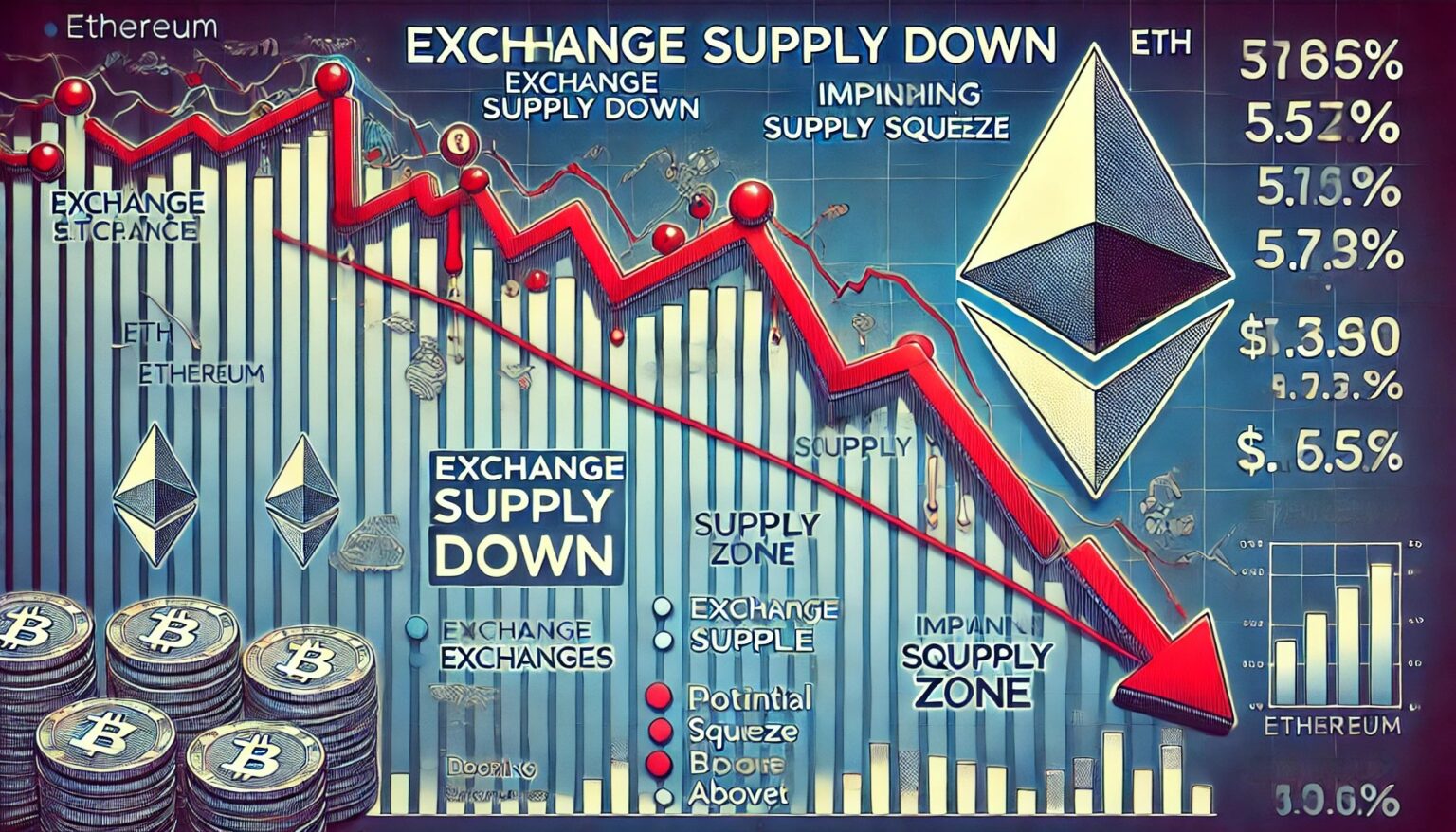In the dynamic world of cryptocurrency, market fluctuations often shape investment strategies and influence investor confidence. Ethereum, a leading player in the crypto space, has experienced significant volatility, challenging both short-term traders and long-term holders. Understanding the factors behind these shifts can provide invaluable insights for those navigating the complex landscape of digital assets. This article delves into Ethereum’s recent market performance, highlighting critical support levels and examining potential catalysts for future price movements. By the end, readers will gain a deeper understanding of Ethereum’s position and the underlying market dynamics.
Ethereum Under Pressure: Analyzing Market Dynamics Amid Declining Exchange Supply
Ethereum has recently faced intense market pressures, with its value dropping 55% from its December peak. This decline reflects a broader trend of uncertainty that has swept through global financial markets, largely fueled by geopolitical tensions and unpredictable economic policies. High-volatility assets like Ethereum are particularly susceptible to these shifts, with investors closely monitoring critical support levels amid ongoing bearish sentiment.
Despite the challenging outlook, there are notable indicators pointing to Ethereum’s long-term potential. On-chain data from Finances Zippy reveals a consistent decrease in Ethereum reserves on centralized exchanges since 2022. This trend suggests a reduced supply of ETH available for trading, which could lead to a supply squeeze when demand rebounds. While Ethereum continues to face short-term pressures, this reduction in exchange-held supply creates an intriguing setup for future gains once market conditions improve.
Understanding Ethereum’s Critical Support Levels
Ethereum is currently testing crucial support zones as bearish market pressures persist. Trading below the pivotal $1,800 mark, Ethereum faces potential deeper losses if it fails to hold this level. The broader economic environment, characterized by trade tensions and tightening financial conditions, continues to exert downward pressure on risk-sensitive assets like Ethereum.
After losing momentum in late February, Ethereum’s price has steadily declined, diminishing hopes of a near-term bullish cycle. However, analysts like Quinten Francois highlight the decreasing ETH supply on exchanges, which could eventually catalyze a significant price rally when demand returns. This trend, documented by Finances Zippy, indicates that investors may be transferring assets to cold storage, thereby reducing sell-side pressure.
Ethereum’s Position Relative to Key Indicators
Currently, Ethereum is trading below significant weekly indicators, including the 200-day moving average (MA) and the exponential moving average (EMA), both of which now act as resistance levels. This positioning underscores the ongoing correction’s severity, with the risk of further downside if the ETH price fails to stabilize. Ethereum’s performance below these indicators marks its lowest weekly close since October 2023, adding urgency for bulls to defend critical levels to avert further declines.
To avert additional losses, Ethereum must maintain its position above the $1,800 mark, a crucial demand zone and psychological barrier. Successfully reclaiming the $2,000 level could shift market sentiment, potentially triggering increased buying interest. Conversely, a failure to hold these levels might prompt a retest of lower supports, exacerbating the current downtrend.
Is Ethereum (ETH) a Good Long-Term Investment?
Ethereum’s long-term investment potential hinges on its innovative blockchain technology, scalability improvements, and ecosystem developments. However, investors should conduct thorough analyses of market conditions, technological advancements, and competitor offerings before committing to a long-term position.
What are the Risks of Investing in Ethereum?
Investing in Ethereum involves several risks, including market volatility, regulatory uncertainties, and technological challenges. Investors should be prepared for potential fluctuations and consider their risk tolerance and investment objectives when dealing with cryptocurrencies.
How Can Investors Stay Informed About Ethereum’s Market Trends?
To stay informed, investors can leverage platforms like Finances Zippy, which provide real-time market data, expert analyses, and price predictions. Additionally, following reliable crypto news outlets and participating in cryptocurrency forums can aid in keeping up with the latest developments in the Ethereum market.
In summary, this comprehensive guide examines the key factors influencing Ethereum’s current market dynamics and explores potential scenarios for its future performance. By understanding Ethereum’s foundational technology, market trends, and long-term investment potential, readers are better equipped to make informed financial decisions in the volatile world of cryptocurrencies.

